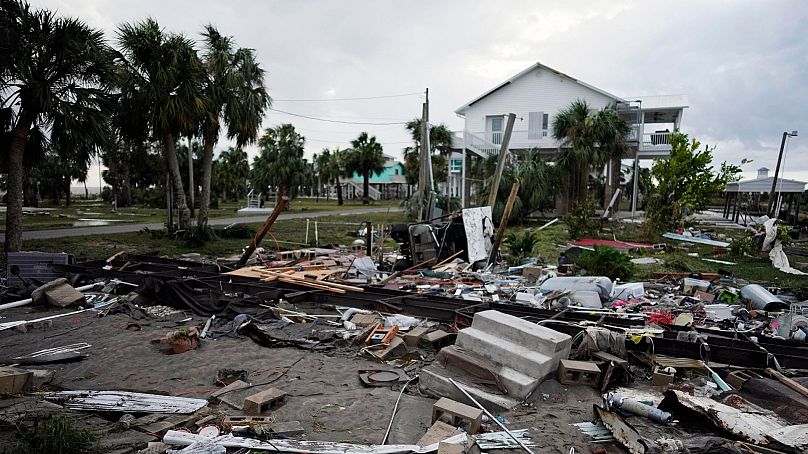Climate change could fuel a ‘rapid intensification’ of hurricanes, an expert has warned.
Extremely warm worldwide surface ocean temperatures have led scientists to project a more dangerous U.S storm season than originally predicted.
The forecast comes as Florida reels from the destruction of Hurricane Idalia, which slammed into the gulf coast at nearly 200km per hour on Wednesday.
While scientists have not yet determined how climate change is influencing a storm’s strength or behaviour, there is strong evidence that these devastating storms are getting worse.
Such powerful weather systems are fuelled by ocean temperatures, said Kevin Reed, a Climate Modeling Scientist and Associate Dean at Stony Brook University.
“I can say fairly confidently that the hurricane that's just made landfall in Florida is wetter than it would have been without climate change,” he said.
“What we're seeing with this storm is similar to what we've seen with, you know, recent storms, is that as the storm is approaching land or as it approached the land, right, it went over really warm sea surface temperatures, which really aided its growth in intensity leading up to landfall.”
In March, National Oceanic and Atmospheric Administration (NOAA) scientists predicted a below-average season. But this has since changed; in August, NOAA forecast a 60 per cent of an “above normal” hurricane season.
Why does global warming increase hurricane size?
Hurricanes need two main ingredients: warm ocean water and moist, humid air.
In the last 40 years, the ocean has absorbed about 90 per cent of the warming caused by heat-trapping greenhouse gas emissions.
Much of this ocean heat is contained near the water's surface, which then evaporates into the atmosphere.
This additional heat can fuel a storm's intensity and power stronger winds.
“When we look at rapid intensification, this quick change in intensity of a storm over, you know, 24-hour periods, there has been work that suggests that it's becoming more likely over the historical record and that it will become more, more, more of these events will undergo rapid intensification in the future,” Reed said.
Hurricane activity is common for North America from June through November, peaking in September – after a summertime buildup of warm water conditions.
However, according to a study published in August in Nature Communications, the first named storms to make U.S. landfall now do so more than three weeks earlier than they did in 1900, moving up the start of the hurricane season to May.












